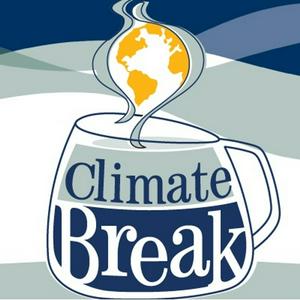Rerun: Breeding Heat Resilient Coral to Restore At-Risk Coral Reefs, with Dr. Saskia Jurriaans
How Can Coral IVF Fight Coral Bleaching?As ocean temperatures increase due to climate change, an emergent crisis known as coral bleaching is on the rise. Coral bleaching poses the largest threat to coral reefs, which are some of the most diverse ecosystems in the world. Coral reef habitats occupy less than one percent of the ocean floor, but constitute more than 25% of all marine life, providing habitats for a vast array of species from small organisms to large fish and sharks. Additionally, biodiverse reefs provide a variety of economic benefits, supporting jobs, tourism, and fisheries. Reefs also protect lives and property in coastal areas, absorbing 97% of a wave’s energy while buffering against currents, waves, and storms.However, when ocean temperatures rise, corals become stressed and expel the marine algae living inside their tissues, known as zooxanthellae. Typically, coral live synergistically with zooxanthellae, meaning the algae provide food for the coral while the algae use the coral as shelter. Due to stress, corals expel zooxanthellae, causing them to become a white skeleton. If the temperatures remain high, the coral won’t allow the algae back and the coral will die. Once corals die, reefs rarely come back. As climate change progresses with its warming trend, corals endure greater stress, and experience longer and more intense bleaching events. Between 2014 and 2017, 30% of the world’s reefs experienced heat-stress leading to coral bleaching. In 2005, the US lost half of its coral reefs in the Caribbean in one year due to a massive bleaching event. Fortunately, marine biologists have been working on a new strategy to restore damaged coral reefs, known as Coral IVF (in vitro fertilization), which entails taking healthy coral eggs and sperm, crossing them in a supervised pool, and returning the mature coral to a damaged coral reef. Importantly, IVF coral are often bred to be resilient to heat-induced bleaching, making Coral IVF a successful strategy in fortifying reefs against bleaching.What exactly is Coral IVF?Coral IVF begins with biologists collecting spawn, or coral eggs and sperm, from heat-tolerant corals that have survived coral bleaching events. With these spawn, biologists can rear millions of baby corals in tanks and coral nursery pools before repopulating damaged reefs for restoration. So far, coral IVF has proven successful. The Great Barrier Reef (GBR) Foundation planted 22 large colonies of new baby corals off Heron Island in 2016. Four years later, the researchers found that the corals had survived a bleaching event and grown to maturity. The next year, the corals had reproduced and spawned babies of their own. In 2016, 81% of the northernmost section of the GBR was severely bleached, including mass bleaching in other sections. The GBR provides an estimated economic value of $56 billion, including 64,000 jobs stemming from the reef. Losing the reef would be a major economic loss for Australia, which has already lost 50% of its coral since 1995. With coral IVF, there is hope for an eventual repopulation of the reef with healthy corals. Beyond the GBR, coral IVF is taking place in reefs across the US, Mexico, and the Caribbean. Approximately 90% of IVF-created corals survived 2023’s heat wave, holding on to the algae that sustain them.The Advantages of Coral BreedingCoral IVF not only mitigates short term reef loss, but also strengthens reefs in the long term. One study revealed that corals in the GBR that survived bleaching in 2016 had twice the average heat tolerance the following year. Research reveals that corals can pass on their adaptive strategies to their offspring. Experiments also reveal that heat-adapted corals can thrive in new environments and be an important source of reef regeneration globally. This technique can therefore be applied to any coral population. Further, the IVF process also can be done quickly, allowing scientists to respond to coral damage in an emergency.Climate change poses an insurmountable riskUnfortunately, climate change still poses a threat to IVF created coral reefs. By 2049, annual bleaching events will become the norm in the tropics. Research reveals that as global temperatures rise, coral will become less tolerant to heat related stress. In Australia, there has been a massive bleaching event every other year for six years. Due to the frequency of such events, coral's ability to reproduce is compromised for a number of years. As global emissions continue to rise, temperatures will continue to rise, inducing further heat-related stress. Eventually, coral may not be able to live in excessively hot ocean waters. Coral IVF is an effective strategy to prepare corals for future temperatures, but likely only up to a certain point.About our guestDr. Saskia Jurriaans is a marine scientist working on the Reef Restoration and Adaptation Program, a multi-organizational partnership between the Australian Institute Of Marine Science, Commonwealth Scientific and Industrial Research Organisation, and others. On her team, she optimizes coral breeding techniques, as well as developing asexual coral reproduction methods to support the Great Barrier Reef.ResourcesAustralian Marine Conservation Society, What is Coral Bleaching?Coral Guardian, Why are coral reefs so important?Coral Reef Alliance, Biodiversity of Coral ReefsGreat Barrier Reef Foundation, What is Coral IVF?NOAA, Get Involved with the NOAA Coral Reef WatchFurther ReadingNOAA, Why are coral reefs important?Time, The Great Barrier Reef Is Being Depleted by Pollution and Climate Change. Could ‘Coral IVF’ Save It?The Guardian, The Great Barrier Reef: a catastrophe laid bareThe Guardian, Why there is hope that the world's coral reefs can be savedThe Guardian, Scientists’ experiment is ‘beacon of hope’ for coral reefs on brink of global collapseFor a transcript, please visit https://climatebreak.org/breeding-heat-resilient-coral-to-restore-at-risk-coral-reefs-with-dr-saskia-jurriaans/.


